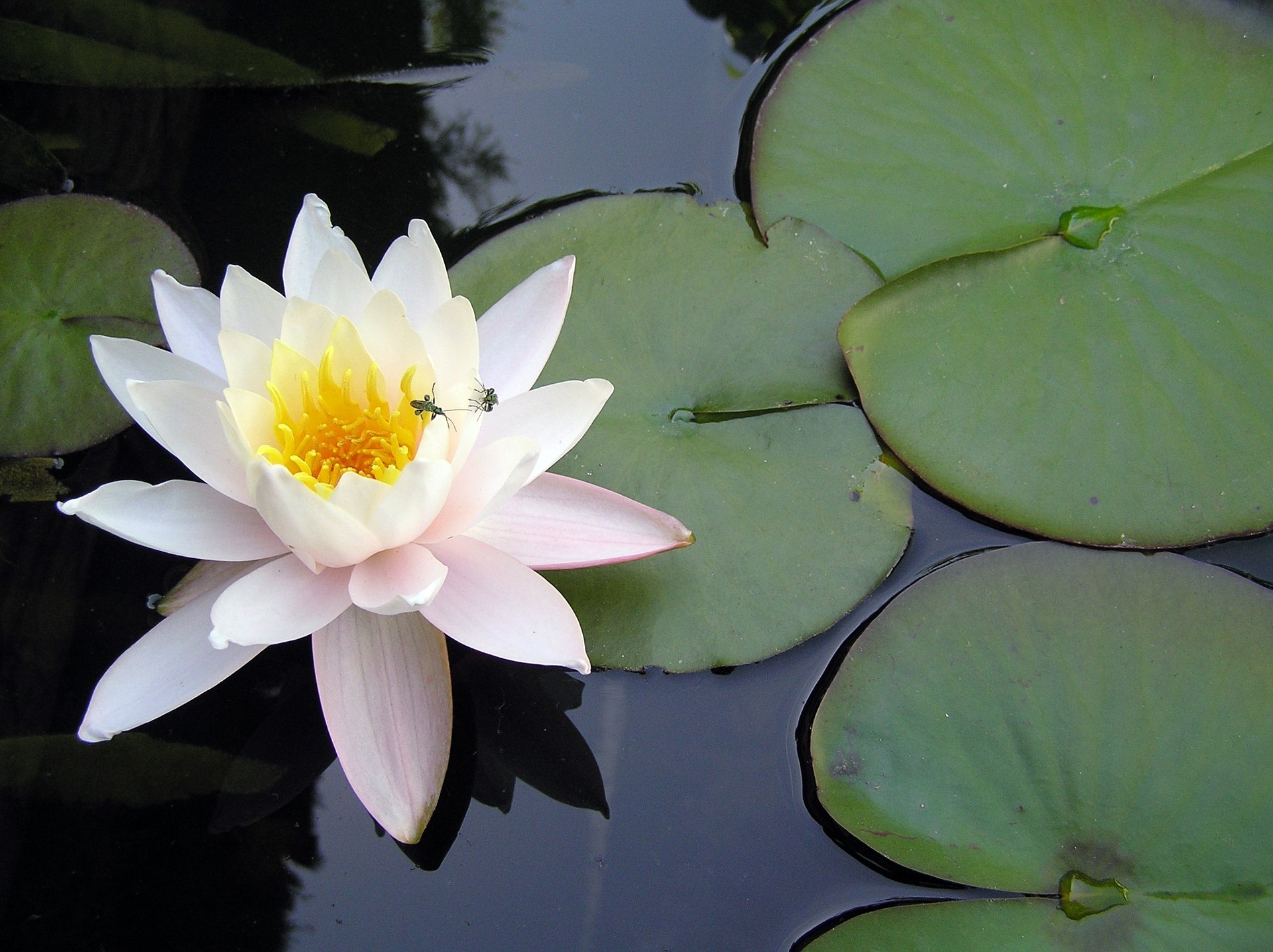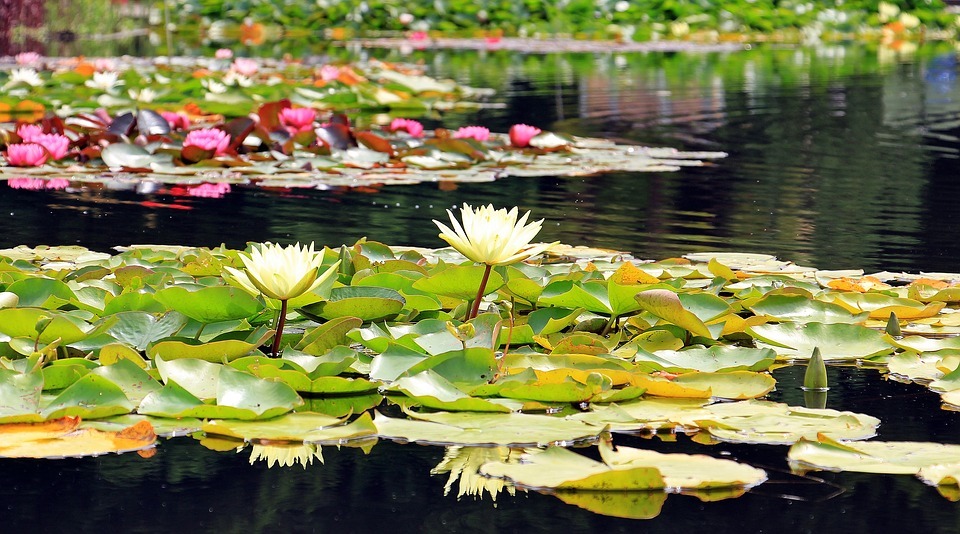Readying Your Fish Pond For Spring
With the winter frost (hopefully) diminishing, this is the perfect time of year to get your fish pond ready for the spring. Some maintenance now will make all the difference come summer, when you will then be able to sit back and enjoy the pond at its best.
Over the autumn and winter months, a significant amount of debris may have entered the pond, such as leaves and twigs, along with the seasonal die-back of various pond plants. Some of this can simply be netted off of the surface, but much of it will have sunk to the bottom of the pond where it will have broken down into a messy sludge. This extra bioload means that your filter/pump will need a good clean to ensure that it is running efficiently.
Years ago, many aquarists would have switched off the filtration over the winter, but today we recommend that filters are kept running 24 hours a day, 365 days a year. This not only maintains water quality, but it helps keeps some of the surface free of ice, in turn ensuring that the oxygen level does not drop too low. An ice-free area also allows for the free movement of amphibians, as well as permitting submerged plant life to receive adequate sunlight to photosynthesise. If ice does form, be sure to carefully melt some areas - never bang on the ice to make a hole - on a daily basis to ensure that toxic gasses (from the breakdown of organic materials) can escape from the pond, and for air breathing organisms to get enough oxygen. Even though the fish will be relatively dormant during the winter, they do still produce waste products that need to be dealt with via the filter. It would also be prudent to insulate any exposed pipework during the colder months.

When it is time for a spring clean, the outside of the pump can be scrubbed with a stiff brush to remove the build up of grime. Check that the impeller is free of debris, and clean the chamber and blades with an impeller brush. It is always wise to keep a spare impeller on hand in case the blades have become damaged. Pipework/hoses can be cleaned with special flexible pipe brushes which will remove any build up of mulm, in turn helping to ensure the most efficient turnover of pond water.
Filter media will need rinsing in a tub of aged water taken from the pond. It must NEVER be rinsed under the tap. This is because the filter media is home to billions of beneficial bacteria which break down the fish waste into a less harmful end product. Tap water contains chlorine and chloramine, bactericides, which, whilst making the tap water safe for us to drink, would kill off all the bacteria. So be sure to rinse only in mature water from the pond in order to preserve these vital bacteria. The filter media does not have to be spotless, just free of larger pieces of debris. Sponges only need replacing if they do not spring back into shape when squeezed. When they need replacing, this must be carried out gradually so that not all beneficial bacteria is lost at once. Replace half the sponge/s, then after a few weeks if water tests are acceptable, replace the other half. Filter maintenance carried out now will ensure it is working as efficiently as possible by the time summer comes around and when the fish will be more active and hungry.
The biggest, and messiest job, is undoubtedly clearing the sludge from the bottom of the pond. As mentioned above, this will have steadily accumulated over the course of the year from decaying vegetation, and formed a thick layer on the bottom. It does not pose too much of a problem during the winter, but during the brighter summer months it will act like a potent fertiliser for algae, so as much as possible needs manually removing. Fortunately help is at hand in the form of various pond vacuums, either manual or electric. There are also treatments available that will help to break down the sludge without deoxygenating the pond, such as Blagdon's Sludge Buster, plus additives that will give the filter bacteria a boost.
For those running a UV clarifier (recommended), the bulb will require changing if it hasn't been replaced in the last 6 months as the output will deteriorate after this time. Now would also be a ideal time to check the O-rings - replacing if necessary - and ensure that the quartz sleeve is clean and in good order.
After carrying out the necessary maintenance, you can then top off any water lost from the pond with dechlorinated tap water.

As the outside temperature begins to rise, you will notice an increase in the activity level of your fish. Once the water temperature is at a steady 12oC (54oF) or above, you can transition your fish from wheatgerm based winter food to standard pond pellets and flakes.
New pond plants can be added at this time, and any established ones that have outgrown their pots (especially water-lilies) can be repotted into larger containers. Use hessian to line the baskets and fill with pond soil, adding in some plant food before topping off with gravel.
Observe your fish as they become more active, keeping a close eye out for any diseases that may have manifested in the warmer temperature, and treat accordingly. And finally do keep a regular check on water quality via a master test kit. This only takes minutes and is invaluable as it may forewarn you of impending problems, allowing you to take swift action to avoid the loss of any fish or the development of an algae bloom.
If you have any questions, please do not hesitate to speak to a friendly member of staff - we are here to help get your pond off to the best possible start this spring!
Checklist of Useful Products:
Evolution Aqua 'Pure Pond' gel balls (bacteria boost)
AquaPond Care Tap Water Treatment



